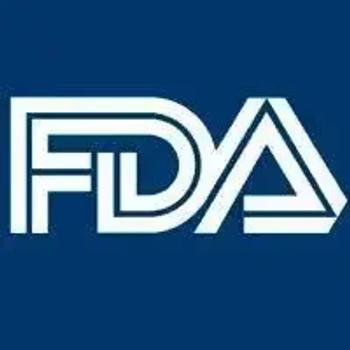
- Vol 53 No 07
- Volume 53
- Issue 07
Data supports mitomycin plus BCG as alternative to BCG alone in NMIBC
Key Takeaways
- BCG plus mitomycin demonstrated similar efficacy and safety to BCG alone, with fewer treatment discontinuations and reduced BCG doses in NMIBC patients.
- The combination therapy showed a 40% reduction in BCG doses, addressing the global BCG shortage and offering a viable alternative treatment option.
According to the authors, the mitomycin/BCG regimen could alleviate some of the burden of the global BCG shortage.
Treatment with BCG plus mitomycin demonstrated comparable efficacy and safety to BCG alone while leading to fewer treatment discontinuations and fewer BCG doses in patients with non–muscle invasive bladder cancer (NMIBC), according to data from the phase 3 ANZUP 1301 trial (NCT02948543) presented at the
According to presenting author Professor Dickon Hayne, these findings have important implications in the context of the ongoing BCG shortage.
“BCG has been the mainline treatment for high-risk NMIBC cancer for more than half a century, usually given with 6-week induction and then maintenance to at least a year. According to guidelines, the ideal regimen and indeed, strain, of BCG is unknown,” Hayne explained during the presentation. “There's also a global BCG shortage, and BCG supply, by best estimates, falls 30% to 50% short of demand. Some evidence already exists of a benefit of adding mitomycin to BCG.”
In total, the ANZUP 1301 trial enrolled 501 patients who were randomly assigned to receive intravesical BCG plus mitomycin (n = 249) or intravesical BCG alone (n = 252). Female patients comprised 22% and 16% of each study arm, respectively. Treatment was not blinded due to the different dosing schedules in each arm.
The primary end point was disease-free survival (DFS). Secondary end points included complete response rate, time to recurrence, time to progression, overall survival, and safety. The trial also assessed quality of life outcomes, which Hayne noted will be presented at a later date.
At the current analysis, data showed a 24-month DFS of 75% (95% CI, 70 to 81) in the mitomycin plus BCG arm vs 71% (95% CI, 65 to 77) in the BCG alone arm (HR, 0.87; 95% CI, 0.65 to 1.16; P = .34). Further, 90% (95% CI, 85 to 93) of patients who received mitomycin plus BCG vs 86% (95% CI, 81 to 90) of patients who received BCG alone achieved a complete response on cystoscopy at the 3-month timepoint (RR, 1.05; 95% CI, 0.98 to 1.12; P = .22).
Data also showed that 80% (95% CI, 75 to 85) of patients in the mitomycin plus BCG arm vs 75% (95% CI, 70 to 81) in the BCG alone arm remained recurrence-free at 24 months (HR, 0.85; 95% CI, 0.61 to 1.19; P = .35). Further, 92% (95% CI, 89 to 96) of patients in the combination arm remained free from progression at 24 months compared with 90% of patients in the monotherapy arm (HR, 0.68; 95% CI, 0.41 to 1.11; P = .12).
At 5 years, overall survival was 88% in the combination arm compared with 87% in the monotherapy arm (HR, 1.06; 95% CI, 0.60 to 1.86; P = .85). Death due to bladder cancer occurred in 7 patients in the mitomycin plus BCG arm and 5 patients in the BCG alone arm.
Hayne added, “As stated already, the primary outcome measure for the study was disease-free survival, stratified by T stage and the presence or absence of CIS. However, when the study was conceived, high-grade Ta disease was considered high-risk NMIBC in its own right. However, more recent EAU risk stratifications would put a lot of these patients into an intermediate risk group. So, we decided to perform an exploratory post-hoc subgroup analysis, analyzing the patients by the pre-specified stratification criteria, as in T1 or the presence or absence of CIS, but also to look at the risk group of higher-risk, as in any T1 disease or those with CIS, vs the lower-risk group, high-grade Ta with no CIS.”
In this analysis looking at DFS, the HR was 0.69 in the high-risk group and 1.28 in the low-risk group (P = .043).
“You can see that the addition of mitomycin to the subgroup at higher risk deserves further investigation,” Hayne noted.
Regarding safety, the proportion of adverse events (AEs) between both arms was similar. The incidence of grade 3 or higher AEs was low across both cohorts.
In total, there were 3 deaths on treatment: 1 due to myocardial infarction (BCG only), 1 due to sepsis (BCG only), and 1 due to BCG-related mycotic aortic aneurysm (mitomycin plus BCG). There was another instance of mycotic aortic aneurysm in the BCG only cohort, as well as 1 report of myasthenia gravis in the combination arm.
Data also showed that although the total number of treatment instillations was greater in the combination arm (4033 vs 3383), there was a 40% reduction in the number of BCG doses required with the mitomycin plus BCG regimen (2056 vs 3383). The median number of BCG doses per patient was 9 in the combination arm and 16 in the monotherapy arm.
Overall, 78% of patients in the mitomycin plus BCG arm complete more than 75% of planned treatment doses vs 68% of patients in the BCG alone arm. Additionally, 75% of patients in the combination arm completed all doses (100%) of planned treatment compared with 64% of patients in the monotherapy arm.
Based on these data, Hayne concluded, “[In] ANZUP 1301, which is one of the largest non–muscle invasive bladder cancer studies to be reported in recent times, BCG plus mitomycin shows similar efficacy and safety to BCG alone with fewer treatment discontinuations, 40% fewer BCG doses required, and we've seen that high-risk patients may do better with the addition of the mitomycin. BCG plus mitomycin is a good alternative to BCG alone. Wide adoption of this regimen could go some way to alleviate the global BCG shortage.”
REFERENCE
1. Hayne D, Zhang A, Thomas H, et al. Mitomycin plus BCG as adjuvant intravesical therapy for high-risk, non–muscle-invasive bladder cancer: A randomized phase 3 trial (ANZUP 1301). J Clin Oncol. 2025;43 (suppl 17; abstr LBA4504). doi:10.1200/JCO.2025.43.17_suppl.LBA4504
Articles in this issue
6 months ago
ARANOTE: Darolutamide improves HRQoL in mHSPCNewsletter
Stay current with the latest urology news and practice-changing insights — sign up now for the essential updates every urologist needs.















